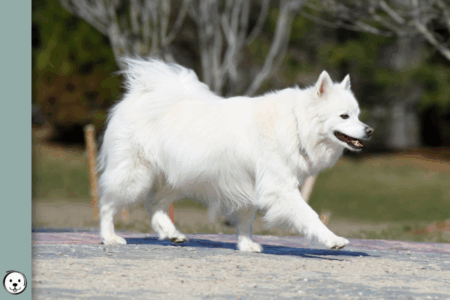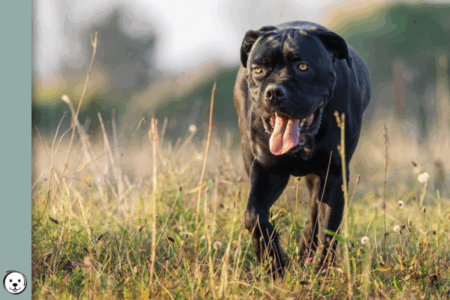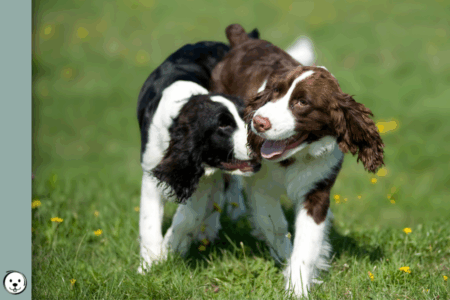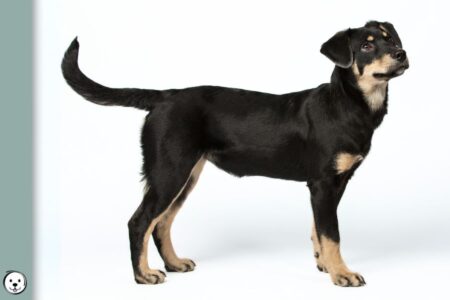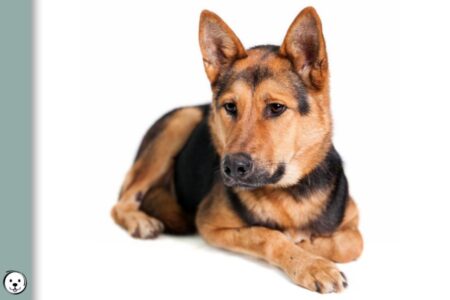The Afghan Hound is an elegant long-haired sighthound that comes in many different colors and patterns. Domino is one of the traits that create some of the many Afghan Hound Coat Colors.
Standard Afghan Hound Coat Colors
Let’s have a closer look at the different Afghan Hound color patterns:
Black Afghan Hound
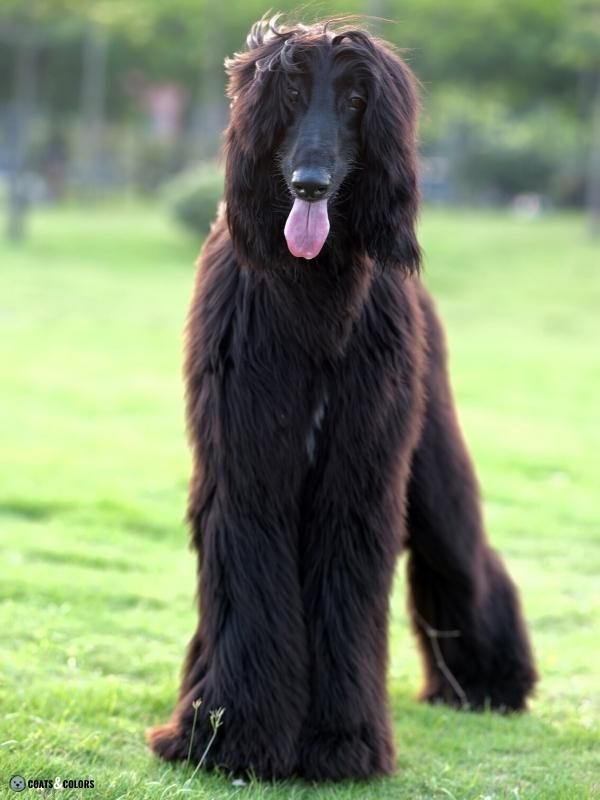
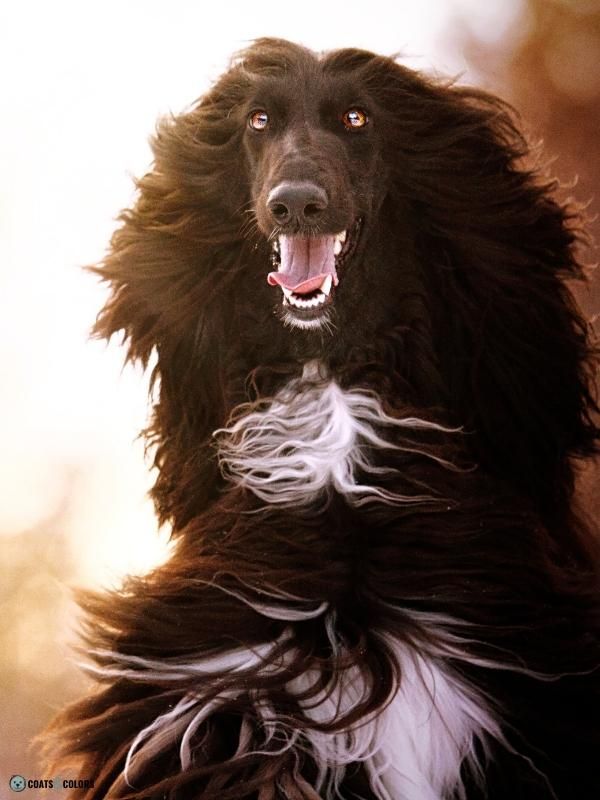
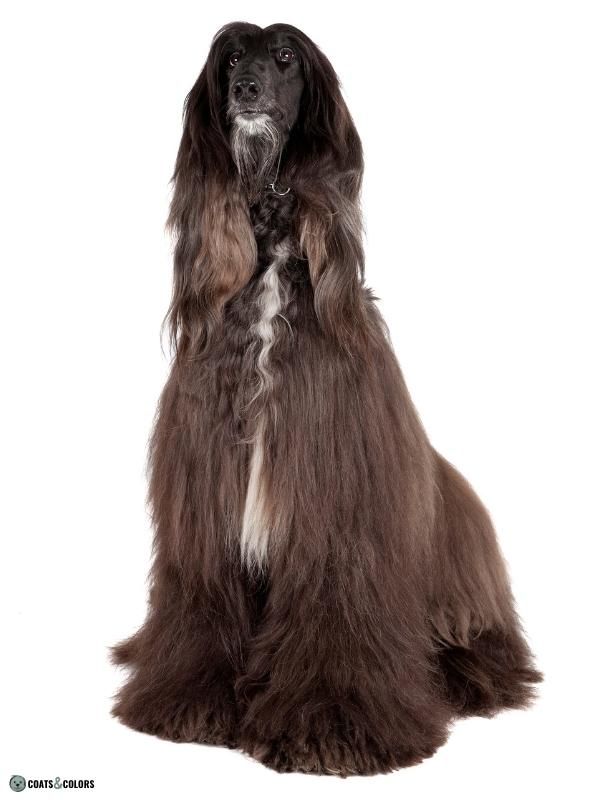

Using genetic terms black Afghan Hounds are dominant black (KB/-)[4].
This stops pigment cells from producing any yellow pigment (phaeomelanin) so they can only produce black pigment (eumelanin).
As a result, dominant black hides a dog’s A-Locus pattern such as sable or tan points because these patterns would need yellow pigment to show. Black Afghan Hounds can also have a black mask (Em/- KB/-) which will of course not be visible on an already black dog.
Black Afghans can have some small white markings on their chest, feet or tail or be solid black. And they sometimes lose some of their color due to pigment fading which seems to occur in this breed.
Red, Golden, Silver Afghan Hound
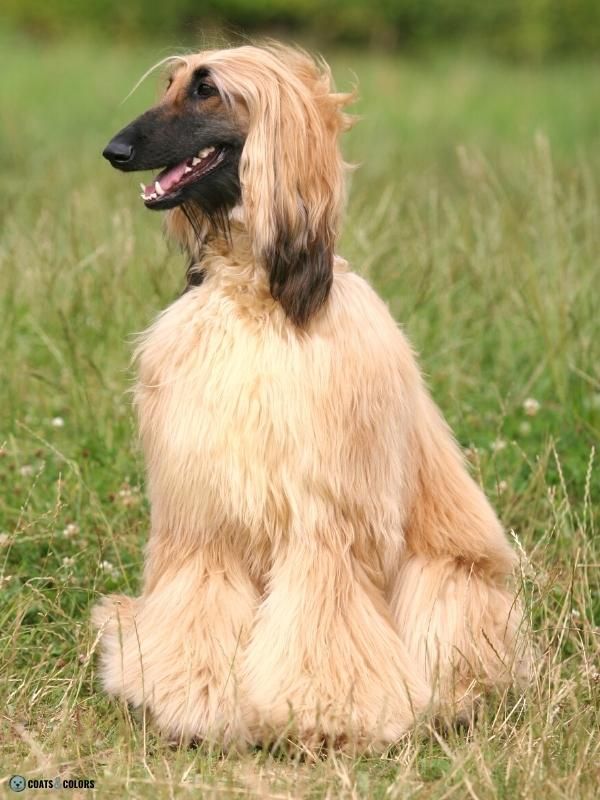
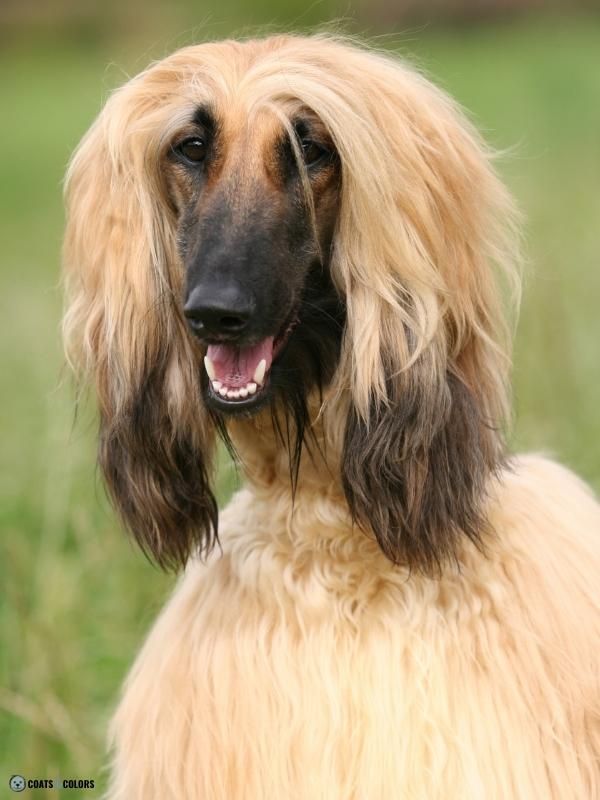
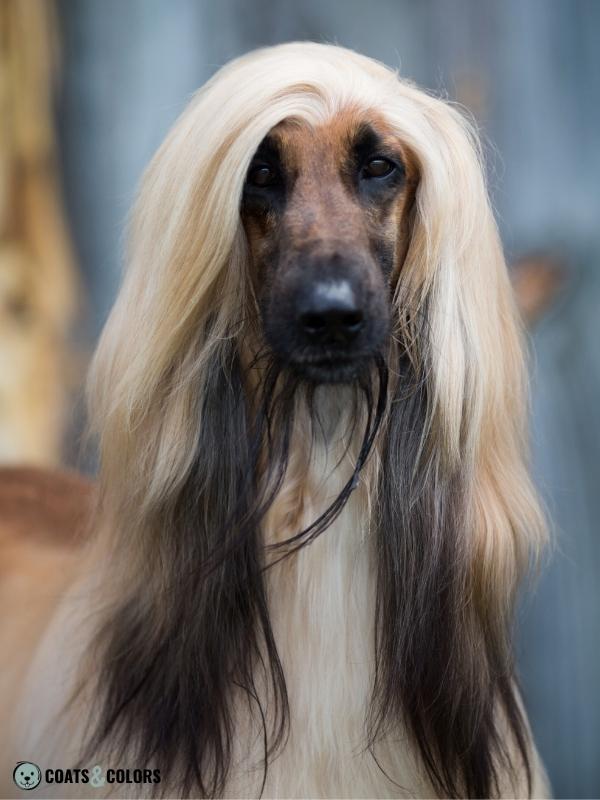


Many Afghan Hounds have a coat color between silver-ish to golden or red, often with visible countershading.
Many of these sable-patterned Afghan Hounds have a black mask (Em/- ky/ky Ay/-). Masks add black pigment to the muzzle and in most cases cause black ear feathering.
But sables without a mask do exist (E/- ky/ky Ay/-).
The British Kennel Club lists “Black Masked Cream” as a standard color.
However, “cream” is usually only used to describe solid yellow or white dogs that are either recessive red (e/e) or domino sable (eG/- ky/ky Ay/-). These dogs can not have a black mask.
The actual coat color depends on what phaeomelanin intensity a particular Afghan Hound can produce. Some breed clubs distinguish between lighter and darker shades of red pigment:
- Silver Afghan Hound (with or without a black mask, black-masked silver)
- Fawn Afghan Hound (with or without a black mask, black-masked fawn)
- Gold Afghan Hound (with or without a black mask, black-masked gold)
- Apricot Afghan Hound (with or without a black mask, black-masked apricot)
- Red Afghan Hound (with or without a black mask, black-masked red)
- etc.
Brindle Afghan Hound
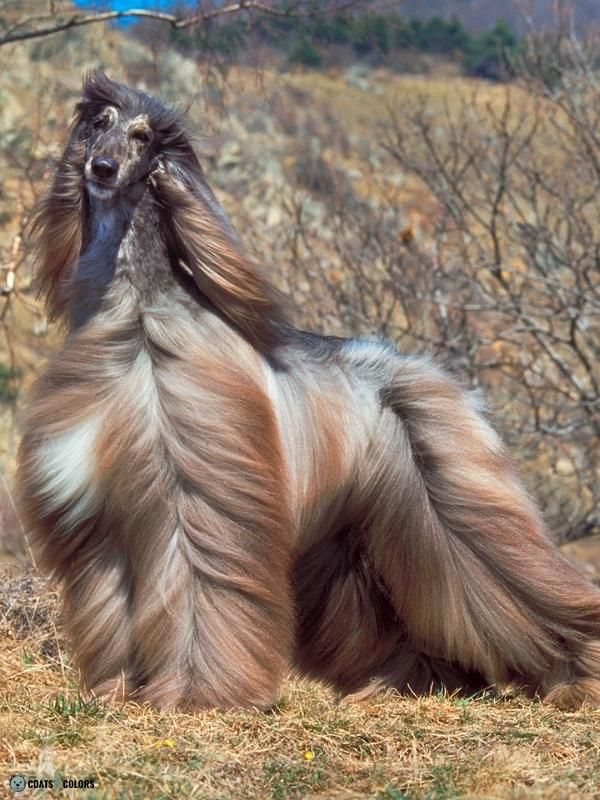
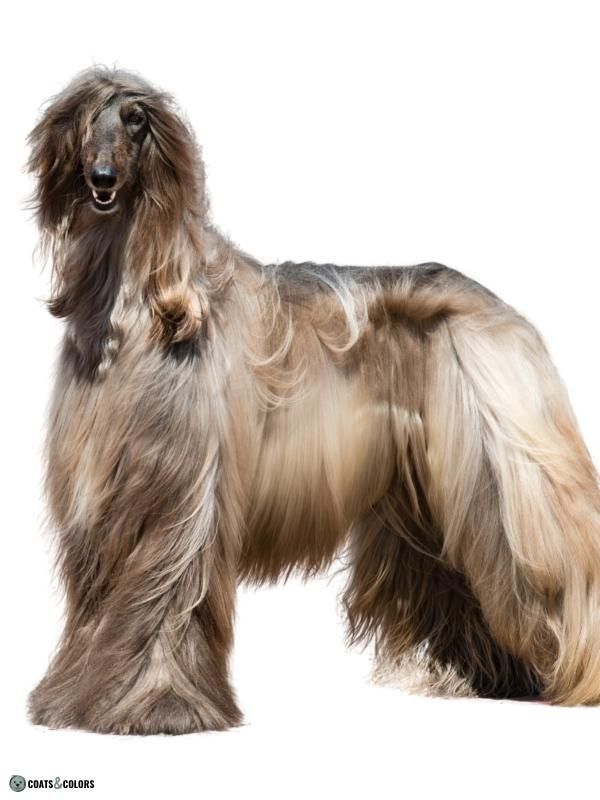
Brindle adds vertical stripes of black pigment to any areas with a yellow or red base color.
For a traditional brindle pattern, the dog has to be sable (kbr/- Ay/-) underneath. And the black mask of many sable-patterned dog in this breed also works when a dog is brindle-patterned (Em/- kbr/- Ay/-) although brindle without a mask does exist (E/- kbr/- Ay/-).
Dogs with light base pigment are called cream brindle or silver brindle, other shades are called gold brindle or red brindle. Brindle dogs also van have countershading.
Brindle patterns can be very sparse or very dense. In longhaired dogs like the Afghan Hound, brindle causes alternating shades of color along the body. But single stripes are most often only visible on areas with a shorter coat like the muzzle or saddle.
Black and Tan Afghan Hound
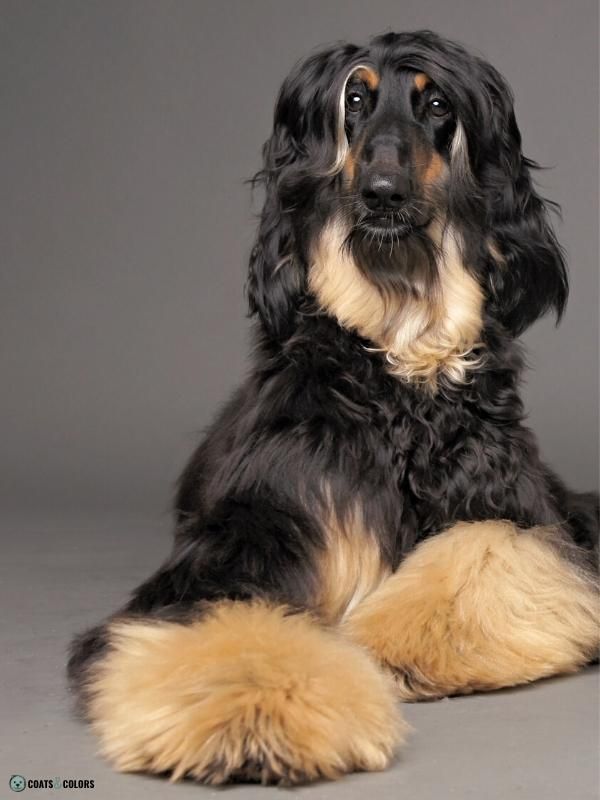
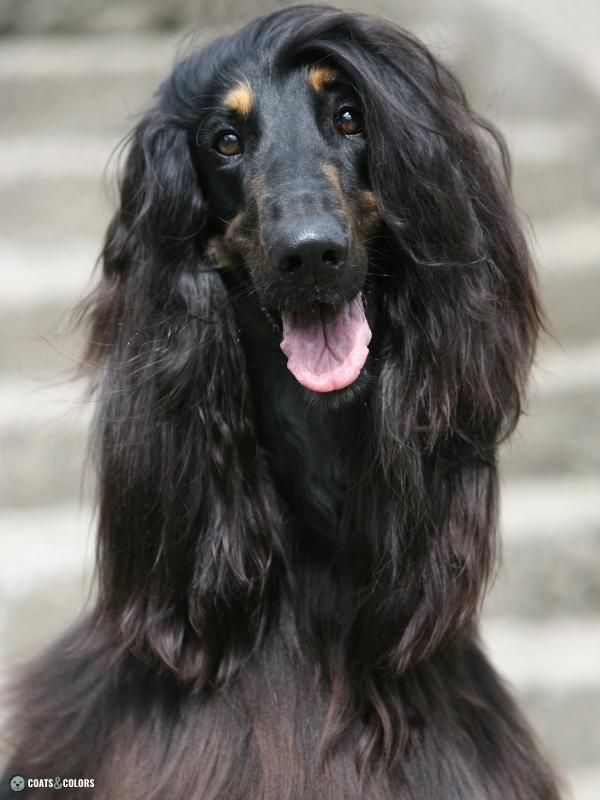
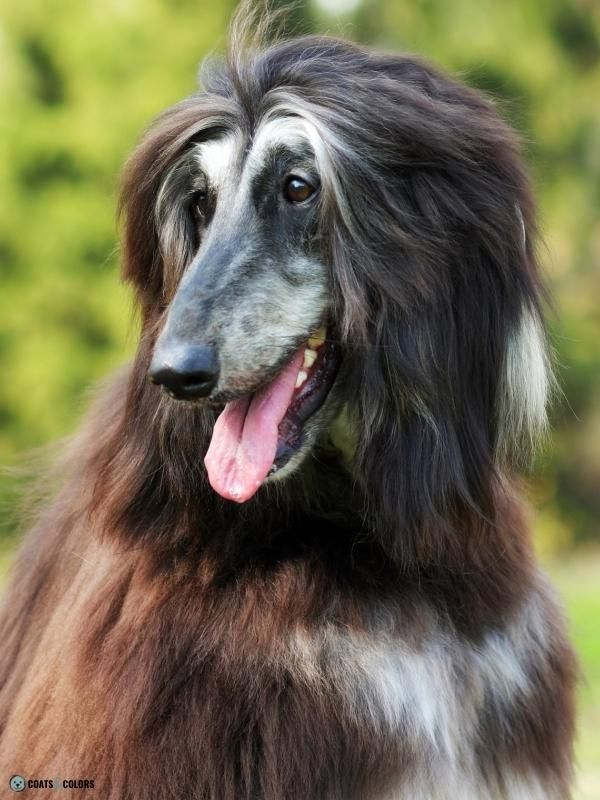
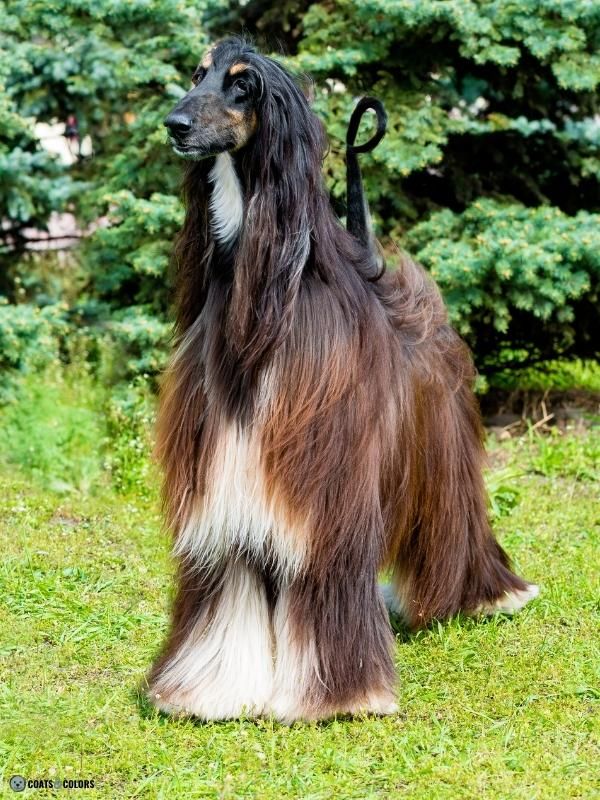
A black-and-tan Afghan Hound (E/- ky/ky at/at) has a black coat with classic tan markings above the eyes, on the muzzle, throat, chest, belly, legs and under the tail.
If a black mask is present (Em/- ky/ky at/at) it can cover some of the facial markings.
Dogs with very light tan pigment are sometimes called black-and-cream or black-and-silver.
These lighter markings are not always the result of low pigment intensity. Many Afghan Hounds show countershading which can also turn the feet, legs, and chest and much lighter than expected.
Some black-and-tan Afghan Hounds are also brindle (Em/- kbr/- at/at). In this case, the brindle striping pattern is visible only on top of the tan markings. This is called a black-and-brindle or a brindle point pattern.
Some black and tan dogs seem to have fading pigment or paler-than-expected hair roots. Progressive greying normally only affects furnished dog breeds, so this is a mystery. A reader suggested that this is often seen in dogs that are Em/eG so could be an effect of incomplete dominance at the E-Locus.
Domino Afghan Hound
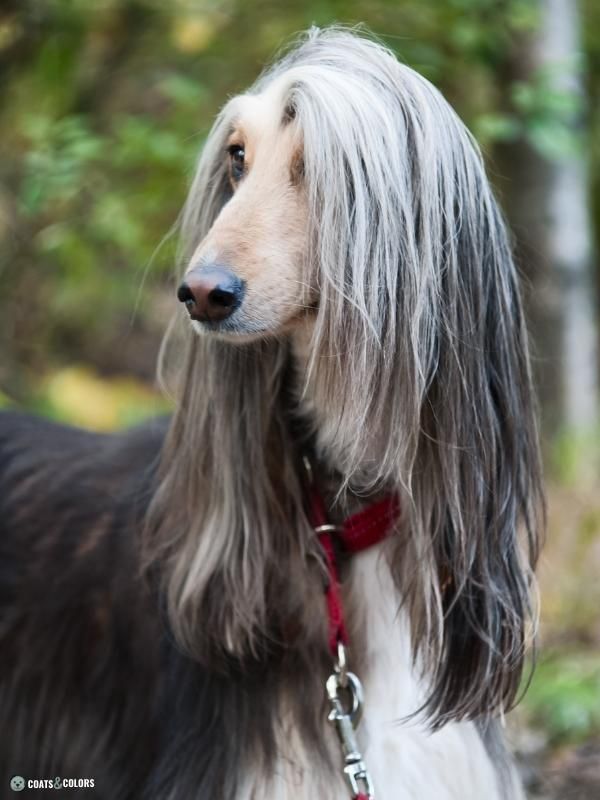
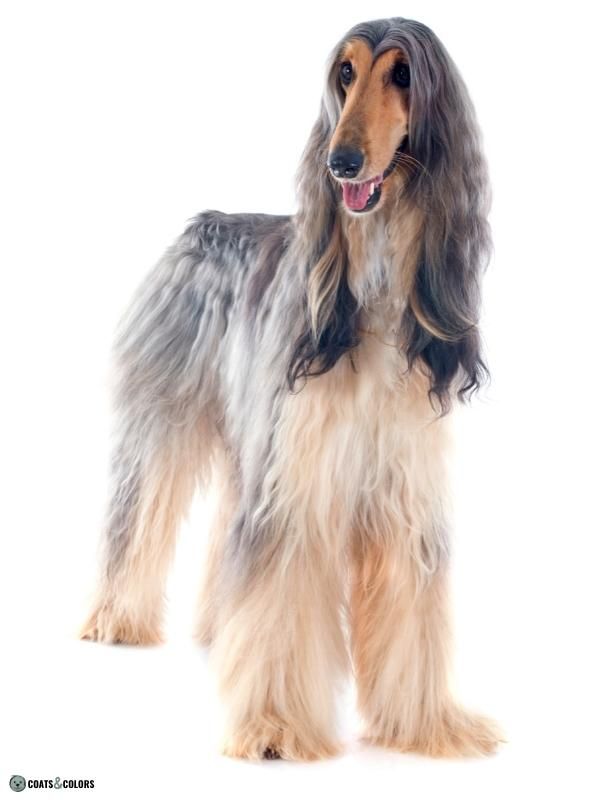

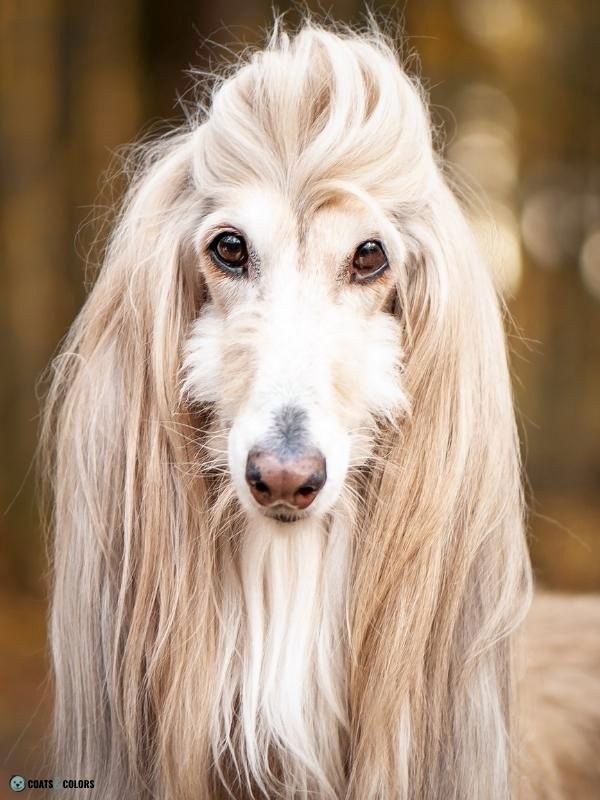

The domino allele found in sighthound breeds like the Afghan Hound (eG) restricts eumelanin production.
In combination with a tan point pattern (eG/- ky/ky at/at) it creates a pattern called domino with light facial markings, a widow’s peak, a pink stripe on the nose or pale hair roots. The domino pattern in Afghan Hounds was named after Ch. Tanjores Domino (in other sighthounds this is called grizzle).
The darker hair on the back can have different shades so people use terms like blue domino, blue-and-cream, silver domino or red domino to describe the colors of a particular dog. Dogs with domino can never have a black mask since they can’t express Em/- and eG/- at the same time.
Blue Afghan Hound
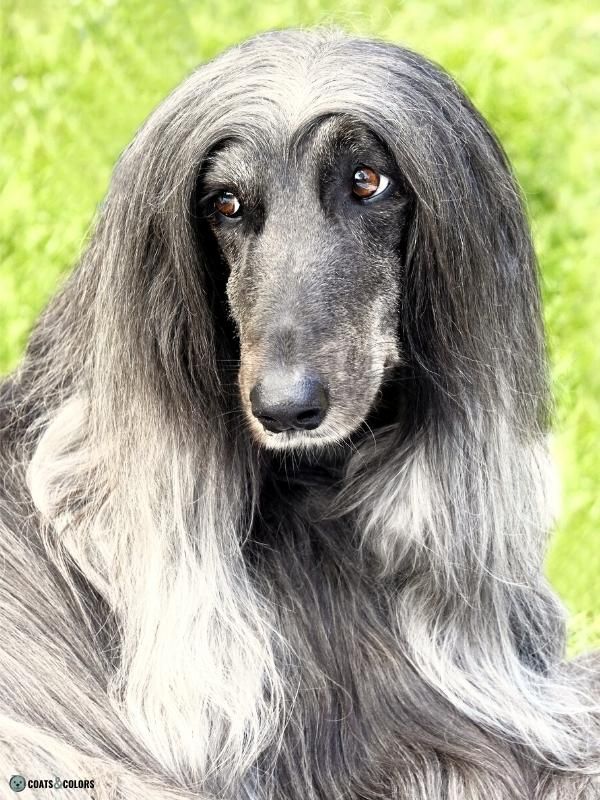
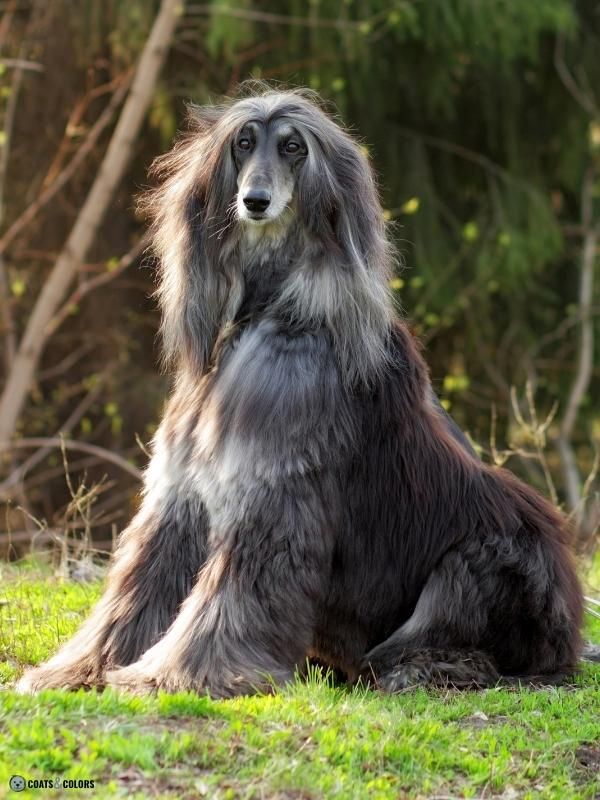
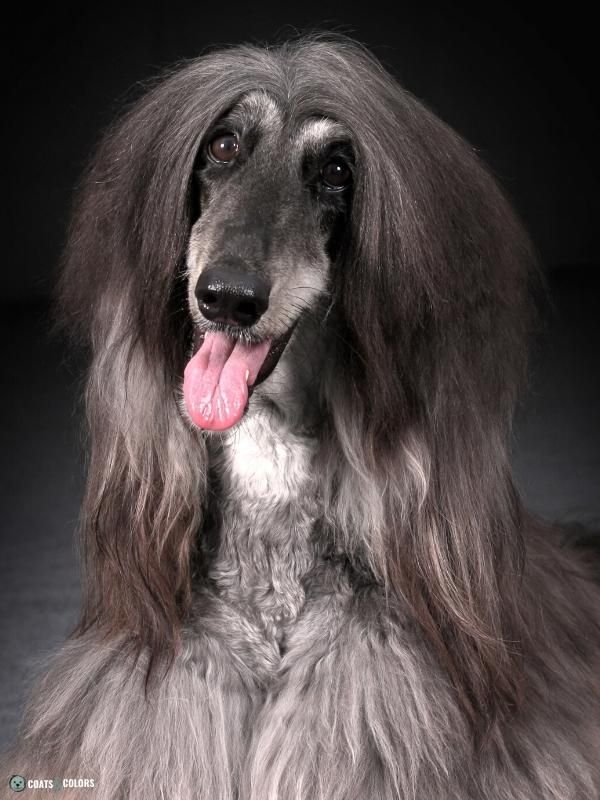

If a dog is dominant black but also has a domino allele (eG/- KB/- ) he will have a blue or greyish coat. These dogs are not really blue (as in diluted black) but they have less-than-normal black pigment with a pale undercoat and a lighter hair base.
Normally a dominant black dog would be solid black but domino causes some of the pattern hidden under the black coat to bleed through. So a silver or blue Afghan Hound can be more or less grey all over (eG/- KB/- Ay/-) or have a pattern that resembles washed-out greyish tan points (eG/- KB/- at/at).
Most blue Afghans have a sooty mask on their muzzle. Puppies can look as if they have some big white markings caused by patches of very light undercoat.
Brindle Point Domino Afghan Hound
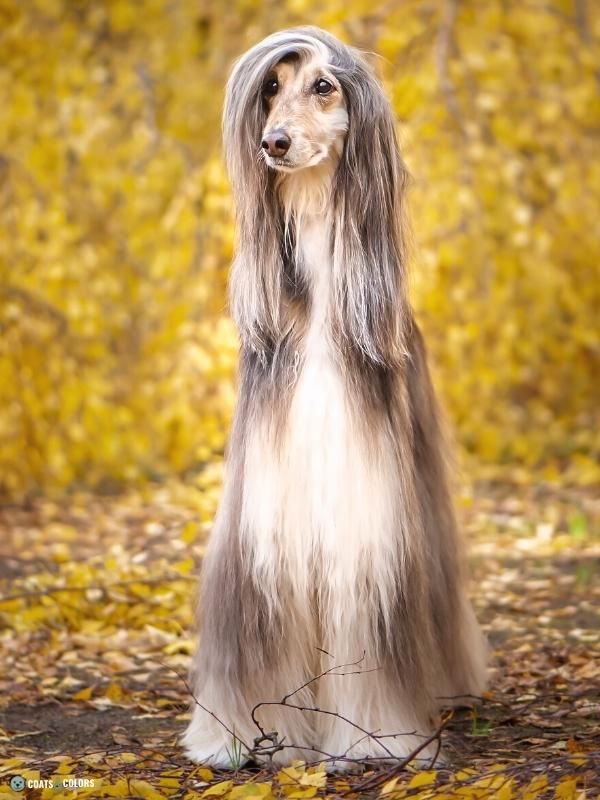
Domino describes a dog with a tan point pattern and a domino allele (eG/- ky/- at/at). But what if the tan points are brindled (eG/- kbr/- at/at)?
These dogs show a normal domino pattern but the domino allele causes the striping pattern to fade and behave differently than expected. The black areas on these dogs tend to become somewhat transparent so that the brindle striping in these parts is not covered up properly and becomes visible.
So on a dog with a domino brindle point pattern (eG/- kbr/- at/at) the brindle can become visible in the black mantle while almost disappearing from the tan markings.
With domino brindle, it’s normal that brindle on the face, belly and lower legs is reduced to only some darker smudges while staying visible at the dog’s dorsal area. In some cases, it’s hard to spot such a faint pattern on a longhaired dog like the Afghan Hound.
Depending on the color combinations found on a particular brindle domino dog this pattern is called red domino brindle, cream domino brindle, etc. Since a dog that expresses a domino pattern obviously is eG/- at the E-Locus he can never express a black mask (Em/-).
Oyster Brindle Afghan Hound
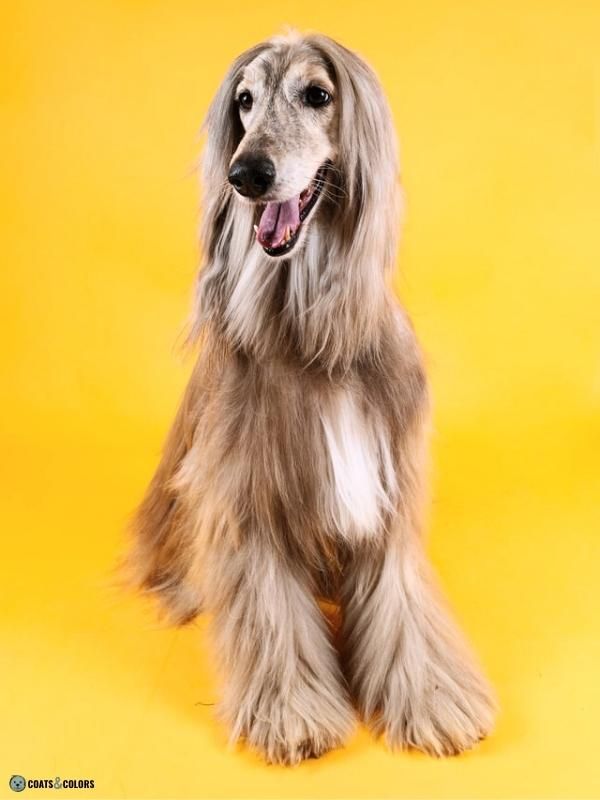
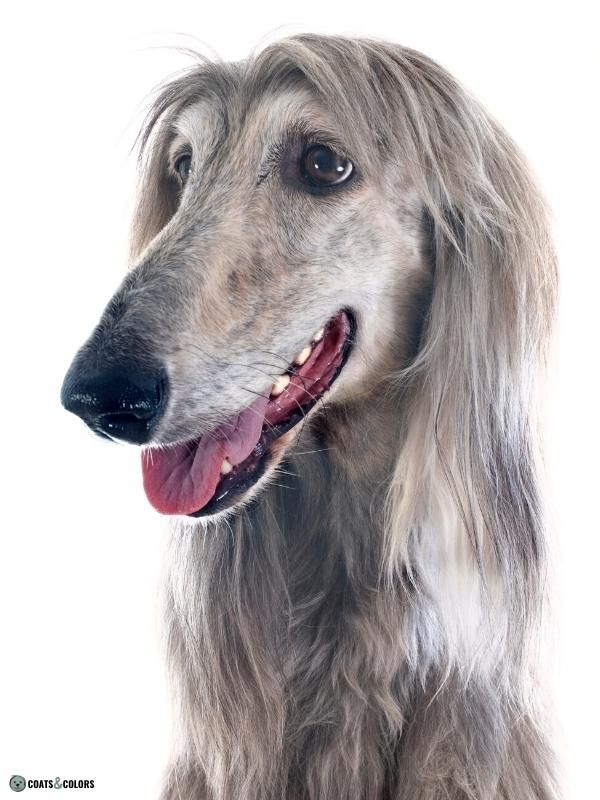
On a sable brindle dog with a domino allele (eG/- kbr/- Ay/-) the black striping can become very diluted and faint and the dog’s base color might lighten to some degree. This can create a pattern from creamy beige to dark silver grey.
Since the term “domino” in this breed is already reserved for dogs with a domino tan point pattern (eG/- ky/- at/at) breeders call a domino sable brindle silver brindle, blue brindle or oyster brindle.
Cream or White Afghan Hound
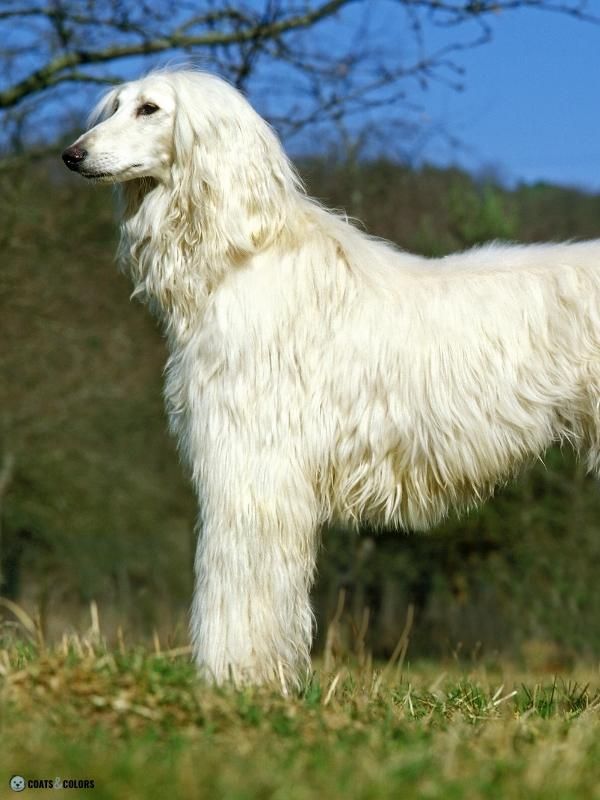


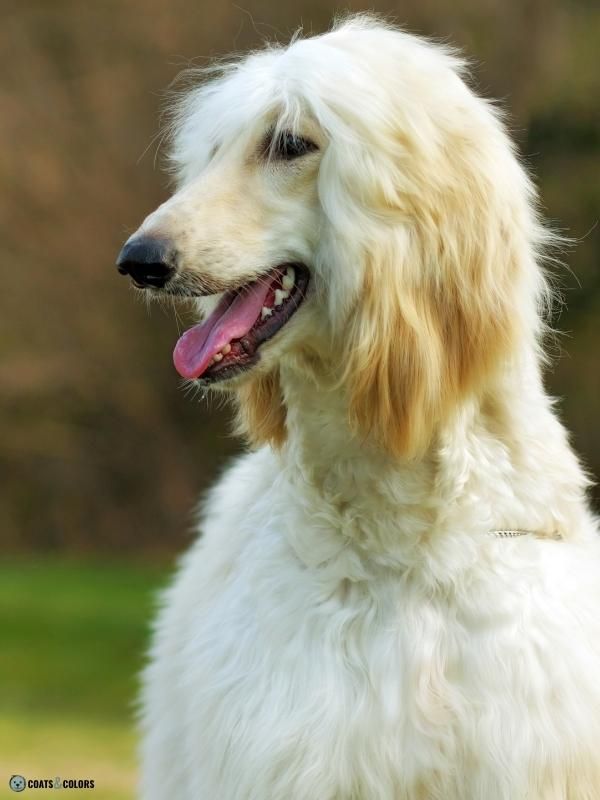
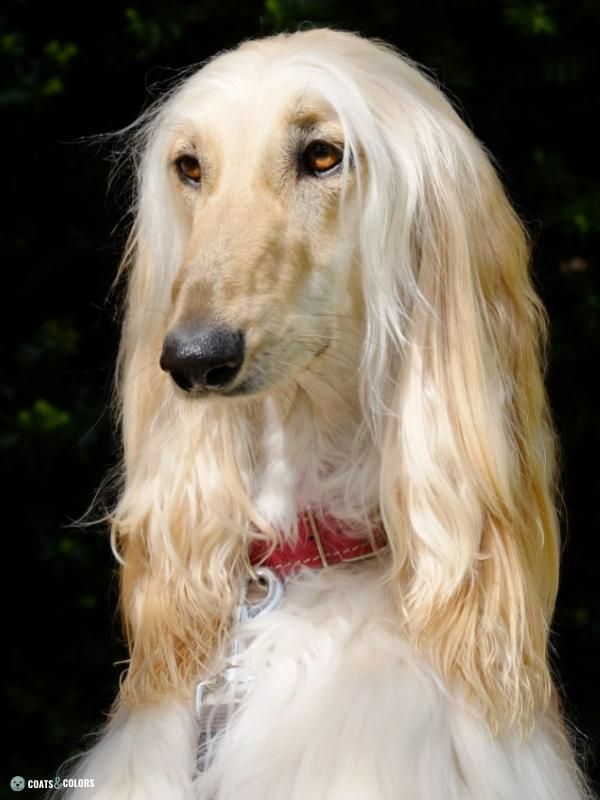
A cream or white Afghan Hound has a light yellow to off-white coat.
He can be recessive red (e/e) with very light pigment intensity. Affected dogs can only ever produce the yellowish pigment type phaeomelanin. They can neither have a black mask nor black shading or brindle. In many cases, these dogs have fading nose pigment and white whiskers.
But a very light-colored or pale ivory Afghan Hound could also be a sable domino (eG/- ky/ky Ay/-), also called cream, cream domino or newsprint cream.
Domino decreases the production of black pigment and often lightens the shade of phaeomelanin on a particular dog. So these dogs rarely have any dark shading left and tend to have a very light coat color.
In most cases, it is impossible to distinguish between different versions of white, cream, or cream domino just by looking at a dog. Without knowing the dog’s pedigree you have to rely on genetic testing.
Non-Standard Afghan Hound Coat Colors
Non-standard colors can happen in any dog breed. Most breeders avoid them, others breed them on purpose for various reasons despite being considered undesirable.
Sometimes these non-standard colors occur by accident due to recessive alleles.
Recessive traits will only be expressed in dogs that inherited a copy from each of their parents. But dogs with only one copy can carry and pass on these traits for generations. And in other cases, a non-standard color is achieved by crossbreeding and introducing a non-standard trait on purpose.
But since the Afghan Hound is mostly bred as a show dog, all undesirable colors were removed a long time ago, it seems.
The breed standard(s) state that “all colors are permissible“. But historically, the Afghan Hound never came in merle and lost some colors and patterns like dilute, liver, white spotting or saddle tan.
Afghan Hound Coat Colors Overview
The breed standard describes all the different traits an Afghan Hound should have.
This includes his conformation and temperament but also the coat texture and color of an ideal representative of this breed.
The major kennel clubs often use their own standards provided by their affiliated breed club. These standards are usually similar in their general outline but can differ in many details like coat color.
In the Afghan Hound, all the major breed clubs agree that all color patterns are permissible. Only the KC and AKC provide a list of descriptive terms for patterns that are considered typical for this breed.
In the end, all clubs accept all of the traditional Afghan Hound coat color patterns whether they specifically mention them or not[1-3]:
| AKC | FCI | KC | |
|---|---|---|---|
| Black | ✅ | (✅) | ✅ |
| Black & Silver | ✅ | (✅) | ✅ |
| Black & Cream | ✅ | (✅) | ✅ |
| Black & Tan | ✅ | (✅) | ✅ |
| Brindle | ✅ | (✅) | ✅ |
| Black & Brindle | ✅ | (✅) | ✅ |
| Cream | ✅ | (✅) | ✅ |
| Masked Cream | ✅ | (✅) | ✅ |
| Cream Brindle | ✅ | (✅) | ✅ |
| Gold | (✅) | (✅) | ✅ |
| Masked Gold | (✅) | (✅) | ✅ |
| Gold Brindle | (✅) | (✅) | ✅ |
| Red | ✅ | (✅) | ✅ |
| Masked Red | ✅ | (✅) | ✅ |
| Silver | ✅ | (✅) | (✅) |
| Masked Silver | ✅ | (✅) | ✅ |
| White | ✅ | (✅) | ✅ |
| Domino | ✅ | (✅) | (✅) |
| Blue | ✅ | (✅) | ✅ |
| Red Domino | ✅ | (✅) | ✅ |
| Blue Domino | ✅ | (✅) | ✅ |
| Blue & Cream | ✅ | (✅) | ✅ |
| Domino Brindle | ✅ | (✅) | ✅ |
| Oyster Brindle | (✅) | (✅) | ✅ |
Afghan Hound Coat Color Genetics
A dog’s coat gets its colors from two pigment types called eumelanin and phaeomelanin. Different proportions of colors in a particular dog’s coat create different patterns.
But Afghan Hounds, like most dog breeds, can only produce some of all the possible colors and patterns. These are the genes and alleles involved in Afghan Hound’s standard coat colors and patterns:
| E-LOCUS | Em = melanistic mask E = normal pattern eG = domino e = recessive red |
| K-LOCUS | KB = dominant black kbr = brindle ky = normal pattern |
| A-LOCUS | Ay = sable aw = agouti (rare!)[4] at = tan points |
| B-LOCUS | B = black |
| D-LOCUS | D = normal pigment |
| S-LOCUS | S = no spotting |
| M-LOCUS | m = non-merle |
Eumelanin Colors
All Afghan Hounds are fixed for black eumelanin pigment (B/B D/D). Even if not present in a dog’s coat color pattern it is always eumelanin that gives color to a dog’s nose, skin, nails or eyes.
Although some Afghan Hounds are called “blue” these dogs still produce black pigment. The greyish shade in their coat is caused by a domino allele (eG/- KB/-).
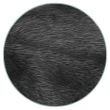
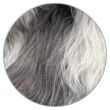
(black domino)
Phaeomelanin Intensity
The phaeomelanin intensity in Afghan Hounds can have any shade between silver, cream, golden or orange-red. Lighter shades are sometimes associated with a domino pattern.
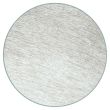
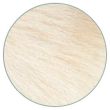
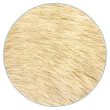
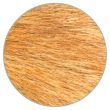
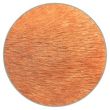
White Spotting
White markings such as a white collar or blaze or white on the feet or tail tip are considered highly undesirable. But some residual white like a white chest patch can happen in any breed.
Color Patterns
The accepted patterns in a dog breed describe the distribution of colors in a dog’s coat. Dogs can be solid-colored or have a pattern with more than one color.
Breed standards almost always use breed-specific and purely descriptive terms. It’s sometimes on us to translate breed standard terminology into more universal genetic terms.
And that can be quite tricky… Sometimes the same term is used for colors that are caused by different genes. And in other cases genetically similar phenotypes have many different names.
| Color Term | Genotype |
|---|---|
| Black | KB/- Em/- |
| White Cream | e/e or eG/- ky/ky Ay/- |
| Masked Sable (Red, Gold, Fawn, Silver, etc.) | Em/- ky/ky Ay/– |
| Sable (Red, Gold, Fawn, Silver, etc.) | E/- ky/ky Ay/– |
| Brindle | E/- kbr/– Ay/– |
| Masked Brindle | Em/- kbr/– Ay/– |
| Black & Tan | E/- ky/ky at/at |
| Masked Black & Tan | Em/- ky/ky at/at |
| Black & Brindle/Brindle Point | E/- kbr/– at/at |
| Masked Black & Brindle/Brindle Point | Em/- kbr/– at/at |
| Domino Blue & Cream | eG/- ky/ky at/at |
| Domino Brindle | eG/- kbr/– at/at |
| Oyster Brindle Blue Brindle | eG/- kbr/– Ay/- |
| Blue | eG/- KB/– |
Afghan Hound Eye and Nose Color
Afghan Hounds can only produce black eumelanin (B/B D/D).
In some dogs, the black pigment in the coat can fade to a more greyish or silvery shade due to sighthound domino. But this doesn’t affect the black pigment found in the eyes or skin.
So whatever an Afghan Hounds coat color pattern, he will always have dark or light brown eyes, a black nose and black pigment on their lips, eye rims, paw pads or nails.
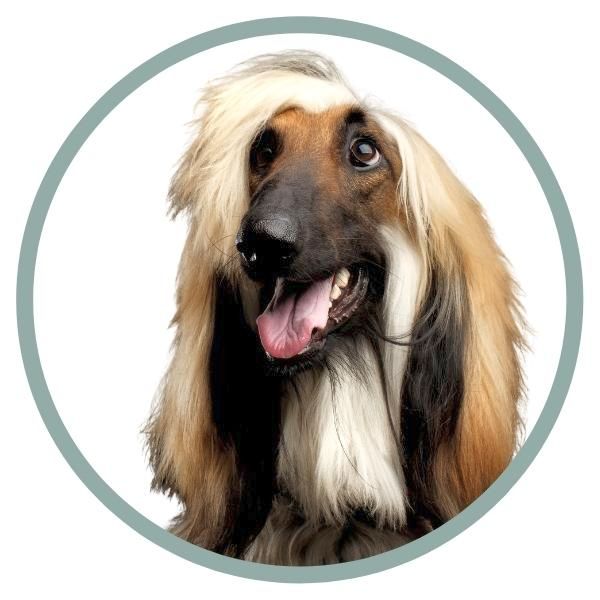

For some reason, some dogs with a domino allele have a pink stripe down the middle of their nose.
And nose pigment can be faded especially in solid yellow, red or white Afghan Hounds. The FCI and KC breed standards use the term “liver” to describe weak black nose pigment. This is technically not correct since there is no true liver pigment in this breed.
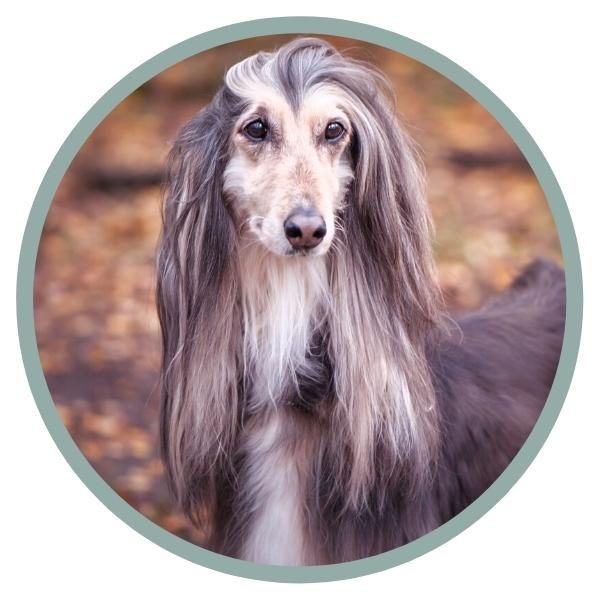

Afghan Hound Coat Types
Afghan Hounds have a very unique coat type and growth pattern very similar but more extreme compared to related breeds like Saluki, Taigan or Tazi.
Afghan Hounds don’t have a normal long coat but seem to have a mutation that gives them long extra undercoat in some areas while the guard hairs stay shorter. Their coat has a very fine and silky texture and gets tangled easily without regular grooming.
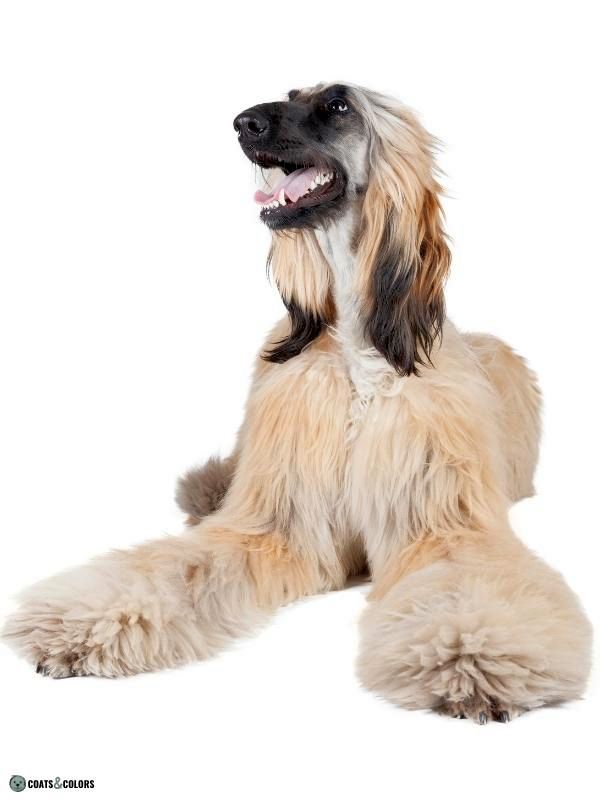
Although they don’t have traditional furnishings they are born with a bearded face and fuzzy coat all over their body. But when they mature until about one year of age they can have some distinctive bearded patches on each side of the face called monkey whiskers.
As the coat in some areas starts to grow out the patterning of areas with a shorter coat so typical for this breed starts to appear. Baby fuzz starts to shed from some areas and can be plucked very easily.
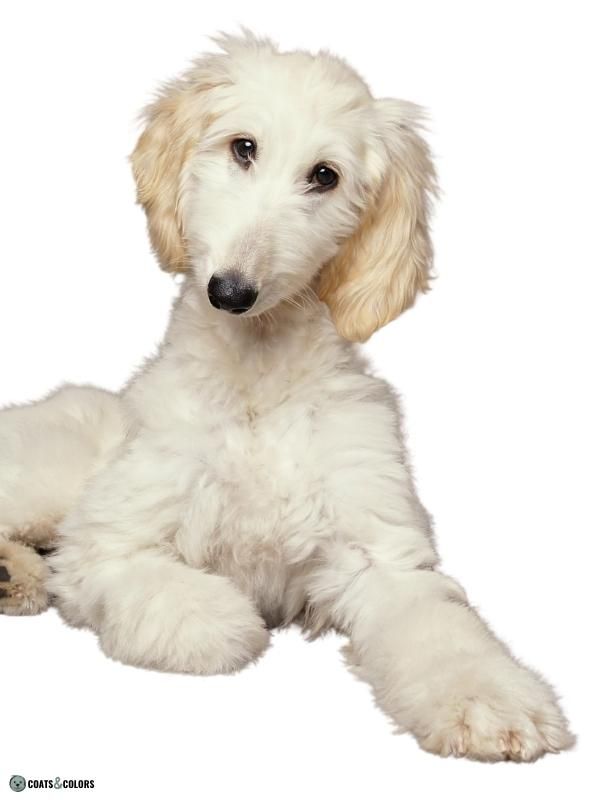
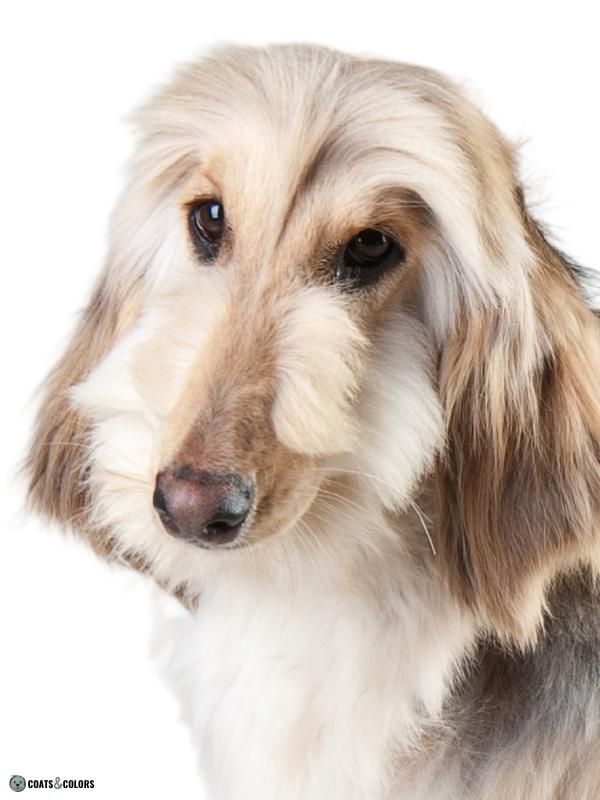
As they finally reach maturity Afghan Hounds lose their monkey whiskers. But some adult Afghan Hounds keep a long chin beard called a Mandarin.
An adult Afghan Hound has smooth short hair on the face, the upper side of his tail, along the spine and partially down the sides of their neck and thighs.
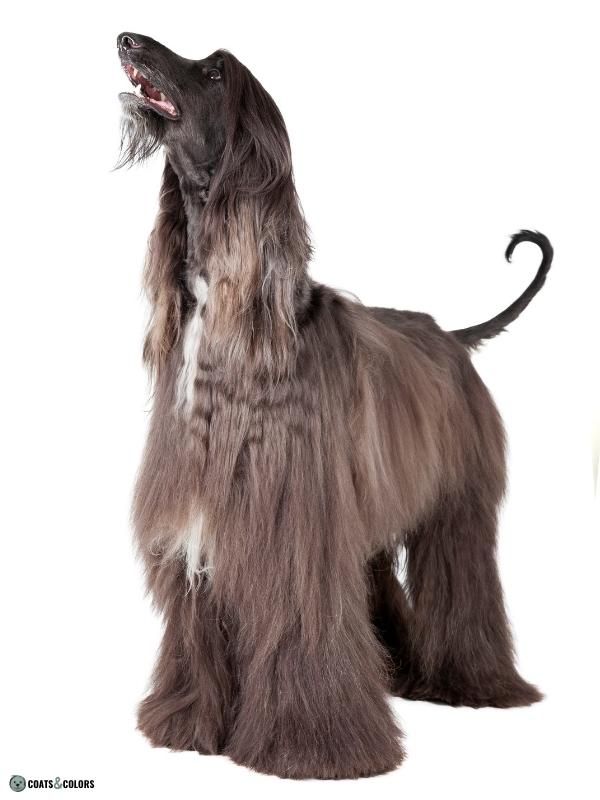
Shorter hair on the ankles is sometimes called cuffs or Turkish Pants. The degree of patterning varies from dog to dog and there are dogs with minimal, moderate and even extreme patterning.
The hair on the legs, flanks, ears and underside of the tail is long and flowing. They have long feathering on their ears and feet and a silky topknot on their heads.
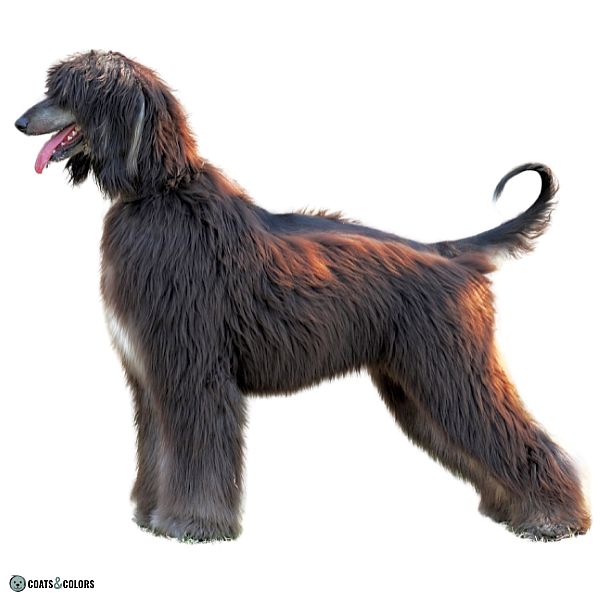
The coat change in Afghan Hounds seems to be heavily influenced by hormones. Just as adolescence triggers the spread of patterning neutering can cause fuzzy patches to reappear.
Another special feature in Afghan Hounds are shorthaired puppies born occasionally out of longhaired parents. Normally, smooth coat is the dominant trait and longhaired dogs are not able to produce shorthaired offspring. Why Afghan Hounds can still do it is a mystery that has yet to be solved.
Learn More
Links
[1] American Kennel Club (AKC): Official Standard for the Afghan Hound (pdf)
[2] Fédération Cynologique Internationale (FCI): Afghan Hound Breed Standard (pdf)
[3] The Kennel Club (KC): Afghan Hound Breed Standard
[4] Dreger et al. (2019). True Colors: Commercially-acquired morphological genotypes reveal hidden allele variation among dog breeds, informing both trait ancestry and breed potential. PLoS ONE 14(10): e0223995. https://doi.org/10.1371/journal.pone.0223995
[5] Dayna L. Dreger, Sheila M. Schmutz. A New Mutation in MC1R Explains a Coat Color Phenotype in 2 “Old” Breeds: Saluki and Afghan Hound. Journal of Heredity, Volume 101, Issue 5, September-October 2010, Pages 644–649. https://doi.org/10.1093/jhered/esq061
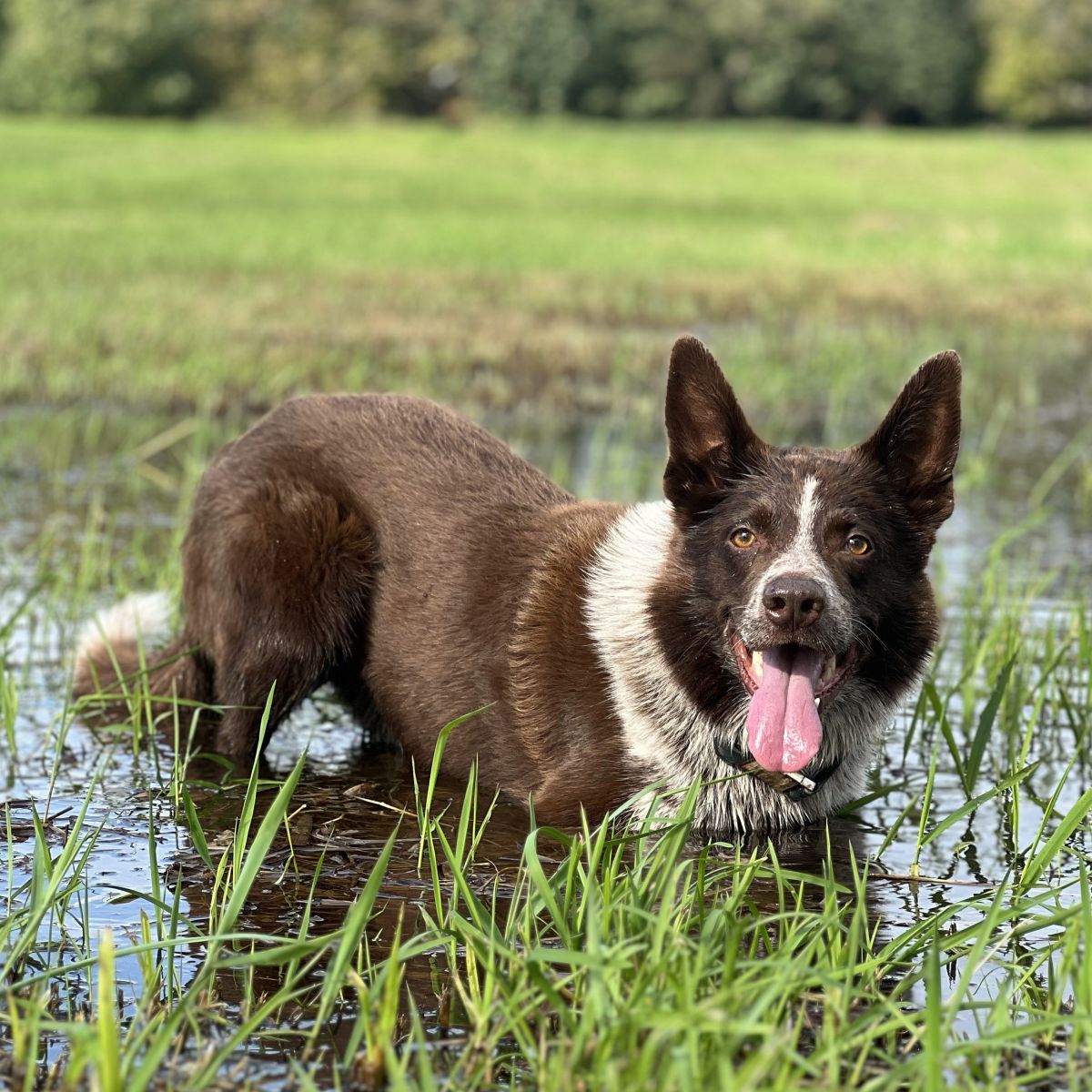
Hi! I’m Steffi. I am a biologist and a big time dog nerd. You are curious about coat color genetics? You’ve come to the right place! Read more.


